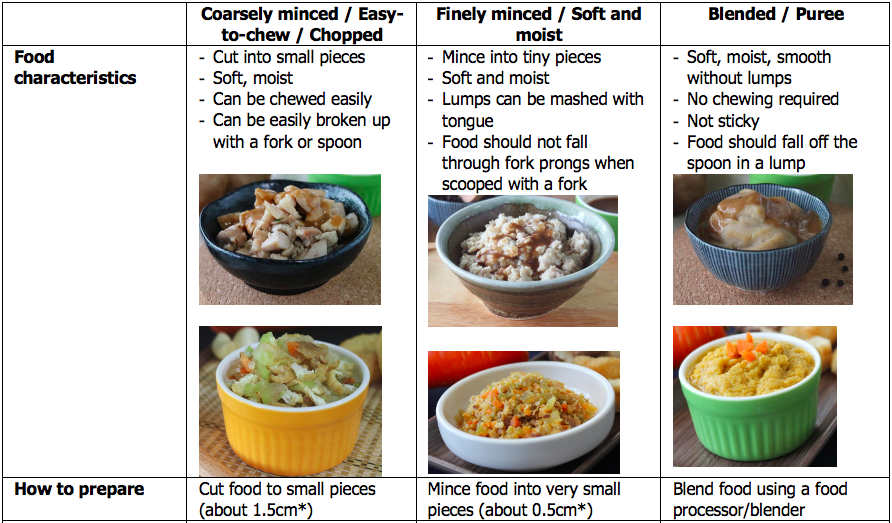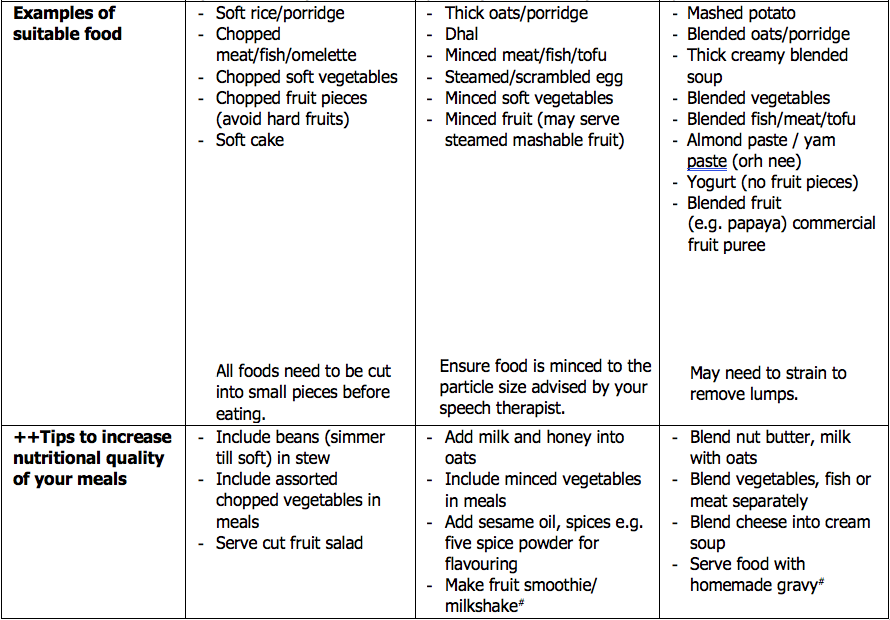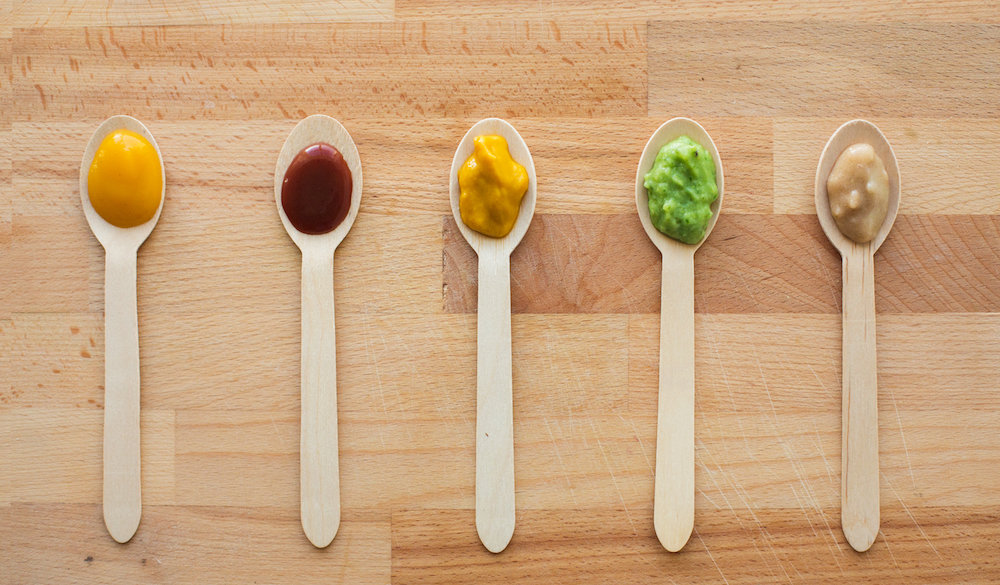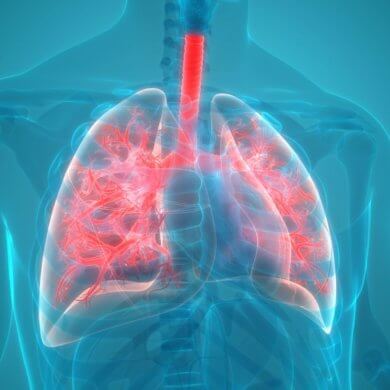Dysphagia is the medical term for difficulty in swallowing food and/or liquid. It is common among people who suffer from Parkinson’s disease, dementia, neck/throat cancer, stroke and brain injury/tumours. Dysphagia can be diagnosed through swallowing assessment by a speech therapist, who can then based on the diagnosis, advise on the:
- appropriate feeding mode (via mouth or via feeding tube),
- type of food consistency (e.g. particle size, texture and thickness), and
- type of fluid consistency (e.g. thickness of fluids) suitable for individuals with dysphagia to prevent aspiration pneumonia (i.e. food/liquid entering the lungs causing lung infection).
To ensure that they receive adequate nutrientsfrom their diets, people with dysphagia should also pay attention to their food and liquid intake. In severe cases of dysphagia, individuals will need to be fed via a feeding tube to avoid dehydration, malnutrition and infection-related complications.
There are three main types of texture-modified diets that are typically prescribed to people with dysphagia:
- Coarsely minced / Easy-to-chew / Chopped
- Finely minced / Soft and moist
- Blended / Puree
For individuals requiring texture-modified diets, hard foods (e.g. fried chicken, crackers) will not be suitable for you.


* Healthcare institutions may use different criteria when it comes to measuring food particle size for different texture-modified diets. Consult a speech therapist for personalised advice as the extent of swallowing difficulty may vary between individuals.
#Adhere to the fluid consistency recommended by your speech therapist.
In addition, there are three main types of thickened liquids commonly prescribed to individuals with dysphagia:
- Nectar-thick (e.g. avocado milkshake, lassi)
- Honey-thick (e.g. flavoured yogurt without fruit pieces)
- Pudding-thick (e.g. thick plain Greek yogurt)
For thin fluids like water, soup, coffee and tea, it is necessary to add thickener (e.g. Thixer, Resource ThickenUp Clear) to achieve the recommended fluid consistency.
Speak to a dietitian if you would like to discuss how to optimise your nutritional needs especially if you have dietary concerns related to pre-existing medical conditions. You can book a teleconsultation session in Singapore if in any doubt.
At Jaga-Me, we believe that healthcare should be a social good – it is a basic human need, and should be available to as many people as possible. We aim to deliver the highest quality care through innovation and a commitment to building meaningful relationships.
Save travelling and long wait times at the hospitals. Get specialised medical treatments:
– Urinary Catheterisation
– Complex Wound Care
– Nasogastric (NG) Feeding Tube
– IV Infusion Therapy
Jaga-Me: Your Trusted Medical Home Care Professional





